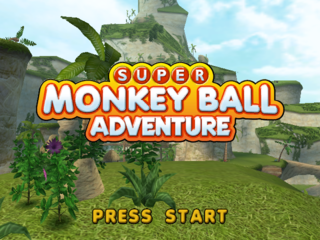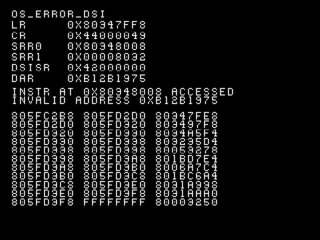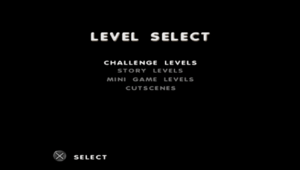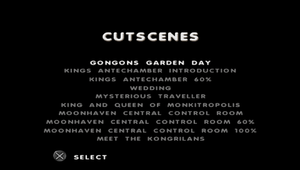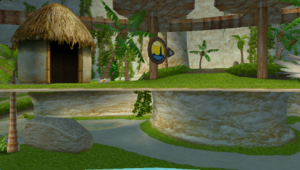Super Monkey Ball Adventure
| Super Monkey Ball Adventure |
|---|
|
Developer: Traveller's Tales
|
Super Monkey Ball Adventure is a sequel to the highly popular game Super Monkey Ball 2. This new installment developed by Traveller's Tales' Oxford studio featured a full story mode with multiple open worlds to go around and do things in (all without the ability to jump!). This particular entry received immense amounts of negative reception due to its poor controls, poor story, and lesser emphasis on the actual platform gameplay. Safe to say TT's Oxford division didn't last much longer, even after their one diamond in the rough. Although the franchise's next entry (which was ironically developed at the same time) would receive mixed results.
| To do: Figure out how to access the debug mode. |
Contents
Sub-Pages
| Prerelease Info |
| Notes |
| Unused Audio Unused songs, unused jingles and a LOT of unused announcer voice clips. |
| Unused Text Unused ability chants, placeholder text, unused development-related text, you name it. |
| Unused Levels Why are there so many versions of Ever Decreasing anyway? |
| Revision Differences Differences between the PS2 version, the GameCube version and the PSP version. |
Unused FMV
Present only in the PS2 version is an FMV named TTIDENT.PSS which is the older version of the Traveller's Tales logo.
Build Dates
| GameCube | Compiled - 10:27:47 Jun 28 2006 NGC Release Build - Version |
|---|---|
| PlayStation 2 | Compiled - 10:28:56 Jul 6 2006 PS2 Release Build - Version |
| PlayStation Portable | Compiled - 12:23:25 Jun 7 2006 PSP Release Build - Version |
Crash Debugger
Exclusive to the GameCube port is this crash handler which appears whenever the game crashes.
Internal Level Names
The internal file names for some of the levels are different from their in-game names.
- FREEWHEELER is internally known as threewheel.
- SKID SLALOM is internally known as skidbiffers.
- CIRCUITS is internally known as threedom.
- FUNRUN is internally known as funnelrun.
- BACKFLIP is internally known as electricbiffersofdoom.
- HEADLONG is internally known as threebie.
- STRANDED is internally known as threesticks.
Settings.xml
-<settings>
-<challenge>
<time>60</time>
<start_lives>3</start_lives>
<max_lives>99</max_lives>
<continues>5</continues>
<extra_life>50</extra_life>
<banana_score>100</banana_score>
</challenge>
-<rolling>
<default_jump_enabled>0</default_jump_enabled>
<default_power_jump_enabled>0</default_power_jump_enabled>
<power_jump_size>35</power_jump_size>
<squash_threshold>60</squash_threshold>
<squash_recover_distance>25</squash_recover_distance>
</rolling>
</settings>
- Edits to settings.xml do effect the game and can be used to activate unused jumping abillities.
- default_jump_enabled gives the player an unused jumping ability when pressing the B button.
- default_power_jump_enabled gives the player another unused jump this time charging up with an unused animation before jumping. The height of this jump is determined by the <power_jump_size> setting.
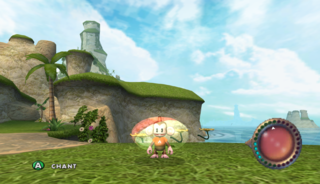
A photo of a power jump fully charged.
A gecko code to enable power jumping in-game.
Power Jump Activator (NA) [Lakitu64]
c2060570 00000002
3c000000 60000001
901e000c 00000000
- If one increases power jump size, squash, and recover distance (in this example, everything is multiplied by 10), the results look like this:
Debug Level Select
- In the PSP version, you can edit Command.txt in the root\PSP_GAME\USRDIR path with the word 'levelselect', enabling you to access any part of the hub world, challenge levels in levels.xml, even the null minigame levels (the game crashes if those are selected)
- Some cutscenes unfortunately crash due to lack of loading the hub and related objects prior
- Oddly this also includes the unused cutscene "GonGons Garden Day", which plops the player inside the first hub's model. The game then seemingly hangs afterwards, unless you exit and reenter the application, in which case it rapidly displays cutscene text with monkey chitter at random of the area. If you don't skip the scene, the game crashes
File Oddities
| To do: Look for more file oddities then document them here. |
There is a folder in the font folder named "shitfuck".
For the GameCube version, although the Level folders outside Puzzles have many files (.CSC models, .lgt lights, .lk hub world link files, etc.), the game actually only uses the .SEQ file, which has all the previous mentioned files if seen in hex. For why there's duplicated unused assets, it's probably due to rushing source files when porting from PS2 development. This is fairly common for other 6th gen Traveller Tales games.
Unlike the PSP version, the PS2 version's RM/SM archives are compressed.
The Super Monkey Ball series
| |
|---|---|
| Arcade | Monkey Ball |
| GameCube | Super Monkey Ball • Super Monkey Ball 2 (Demo) • Super Monkey Ball Adventure |
| Game Boy Advance | Super Monkey Ball Jr. (Prototype) |
| N-Gage | Super Monkey Ball |
| PlayStation 2 | Super Monkey Ball Deluxe (Prototype) • Super Monkey Ball Adventure |
| Xbox | Super Monkey Ball Deluxe |
| Nintendo DS | Touch & Roll |
| PlayStation Portable | Super Monkey Ball Adventure |
| Wii | Banana Blitz • Step & Roll |
| Nintendo 3DS | Super Monkey Ball 3D |
| Nintendo Switch | Super Monkey Ball: Banana Blitz HD • Super Monkey Ball Banana Mania • Super Monkey Ball Banana Rumble |
| Xbox One, PlayStation 4, Windows | Super Monkey Ball: Banana Blitz HD • Super Monkey Ball Banana Mania |
| PlayStation 5, Xbox Series X, Amazon Luna | Super Monkey Ball Banana Mania |
- Pages missing developer references
- Games developed by Traveller's Tales
- Pages missing publisher references
- Games published by Sega
- GameCube games
- PlayStation 2 games
- PlayStation Portable games
- Pages missing date references
- Games released in 2006
- Games released in August
- Games released on August 1
- Games released on August 29
- Games released in July
- Games released on July 14
- Games released in June
- Games released on June 30
- Games released on August 15
- Games with unused areas
- Games with hidden development-related text
- Games with unused cinematics
- Games with unused items
- Games with unused music
- Games with unused sounds
- Games with unused text
- Games with debugging functions
- Games with revisional differences
- To do
- Super Monkey Ball series
Cleanup > Pages missing date references
Cleanup > Pages missing developer references
Cleanup > Pages missing publisher references
Cleanup > To do
Games > Games by content > Games with debugging functions
Games > Games by content > Games with hidden development-related text
Games > Games by content > Games with revisional differences
Games > Games by content > Games with unused areas
Games > Games by content > Games with unused cinematics
Games > Games by content > Games with unused items
Games > Games by content > Games with unused music
Games > Games by content > Games with unused sounds
Games > Games by content > Games with unused text
Games > Games by developer > Games developed by Warner Bros. Games > Games developed by TT Games > Games developed by Traveller's Tales
Games > Games by platform > GameCube games
Games > Games by platform > PlayStation 2 games
Games > Games by platform > PlayStation Portable games
Games > Games by publisher > Games published by Sega
Games > Games by release date > Games released in 2006
Games > Games by release date > Games released in August
Games > Games by release date > Games released in August > Games released on August 1
Games > Games by release date > Games released in August > Games released on August 15
Games > Games by release date > Games released in August > Games released on August 29
Games > Games by release date > Games released in July
Games > Games by release date > Games released in July > Games released on July 14
Games > Games by release date > Games released in June
Games > Games by release date > Games released in June > Games released on June 30
Games > Games by series > Super Monkey Ball series
